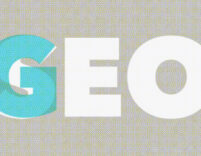Is Your Career Site GEO-Ready?
We’ve all been living in the world of SEO for years. But there’s a new kid in town thanks to AI: Generative Engine Optimization (GEO) and it’s on track to replace traditional SEO by 2028. Truth be told, that shift is already happening. Candidates aren’t just Googling job titles to find opportunities. They’re asking AI to tell them who to work for.
When talent asks ChatGPT, Perplexity, or Gemini about your company’s culture, or for career opportunities they are seeking with organizations that share their core values, what answer will it give?
Your career site is the hub of your employer brand. It’s where your story can come to life. Unless that story is structured and optimized in ways that AI engines can understand and surface it, you risk being invisible in the very places candidates are already turning to, and inevitably will in the future, when they search.
Here are some practical tips to consider:
Optimize for “Who” Not Just “What”
Traditional SEO strategy emphasized “what” people searched (software engineer jobs, nurse jobs near me). GEO is about the “who.” Who’s a great employer for data scientists that makes sustainability a business priority? Who actively supports veterans transitioning from the military? So make sure your site answers the “why work for us” questions to your ideal talent personas.
Make Storytelling Your Strategy
A list of employer perks isn’t usually all that memorable. But a nurse describing why he stays, or an engineer explaining the impact of her work? That’s not just the content job seekers crave. It’s the type of content that AI engines are more likely to pull into summaries. Build stories in testimonials, videos, and day-in-the-life spotlights and strategically place them across blogs, job descriptions, and campaign landing pages for the most impact.
Structure Content for Machines and Humans
Your site has to serve two audiences and that’s people and algorithms. Clear headers, logical site navigation, and schema markup (for jobs, events, and FAQs) help AI engines, including Google which is now serving up AI overviews, parse your information. Pair that with conversational copy that humans can actually connect with and you’ve got a great combo.
Audit with AI in Mind
Run your site through an AI search yourself as if you were a job seeker. Ask ChatGPT: “What is it like to work at [your company]?” Then see what comes back. If the answers don’t reflect your true story, you’ve started to uncover gaps to fill on your career site.
By 2028, GEO may fully overtake SEO, but every day between now and then, more candidates are increasingly going to use AI to help find the right job for them. As they say, the future is now and there’s no better time than the present to make sure your career site is optimized.










